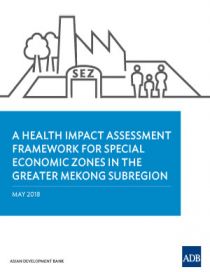Asian Development Outlook- April 2025
<p>Weak consumption in the People’s Republic of China will partly offset robust domestic demand in South Asia. Disinflation is expected to continue, driven by lower food and energy prices, along
<p>Weak consumption in the People’s Republic of China will partly offset robust domestic demand in South Asia. Disinflation is expected to continue, driven by lower food and energy prices, along
Policymakers in Asia and the Pacific have a wide range of options at their disposal to ensure that heightened global uncertainty due to monetary policy normalization in advanced economies and rising global
Asia and the Pacific accounts for a growing share of global gross domestic product (GDP), while the region continues to make progress to reach the Sustainable Development Goals (SDGs), according to a new
The expansion of green renewable energy has been very limited in all the Asian countries, despite their various differences. The contributing factors are numerous, but, the financial factor has been the
India’s energy sector is experiencing a transition with increasing penetration of renewable energy in the energy mix. One of the major impediments in the process of such a transition is to secure the necessary
<p>High rates of overweight and obesity in Asia and the Pacific seriously threaten people’s health and undermine the region’s prosperity warns this new book published by the Asian Development Bank. According to this book, obesity causes 12% of total health care expenditures or 0.78% of gross domestic product in the region.</p>
Urbanization in India is expected to peak in 2050. The Smart Cities Mission was launched in 2015 to transform and improve livability in urban areas in the country. Rapid urbanization puts tremendous stress
The “land question” has invigorated agrarian studies and economic history since Marx and early 20th century writers on agrarian questions. In countries that allow private land ownership, compulsory land
In Asia and the Pacific, 38 developing member countries (DMCs) of the Asian Development Bank (ADB) have committed to take mitigation actions through nationally determined contributions (NDCs) under the

This health impact assessment framework serves as a guide to manage health risks and impacts in economic zones of the Greater Mekong Region and address transboundary issues associated with human migration.
 2018.jpg)
The annual Asian Development Outlook an alyzes economic performance in the past year and offers forecasts for the next 2 years for the 45 economies in Asia and the Pacific that make up developing Asia.